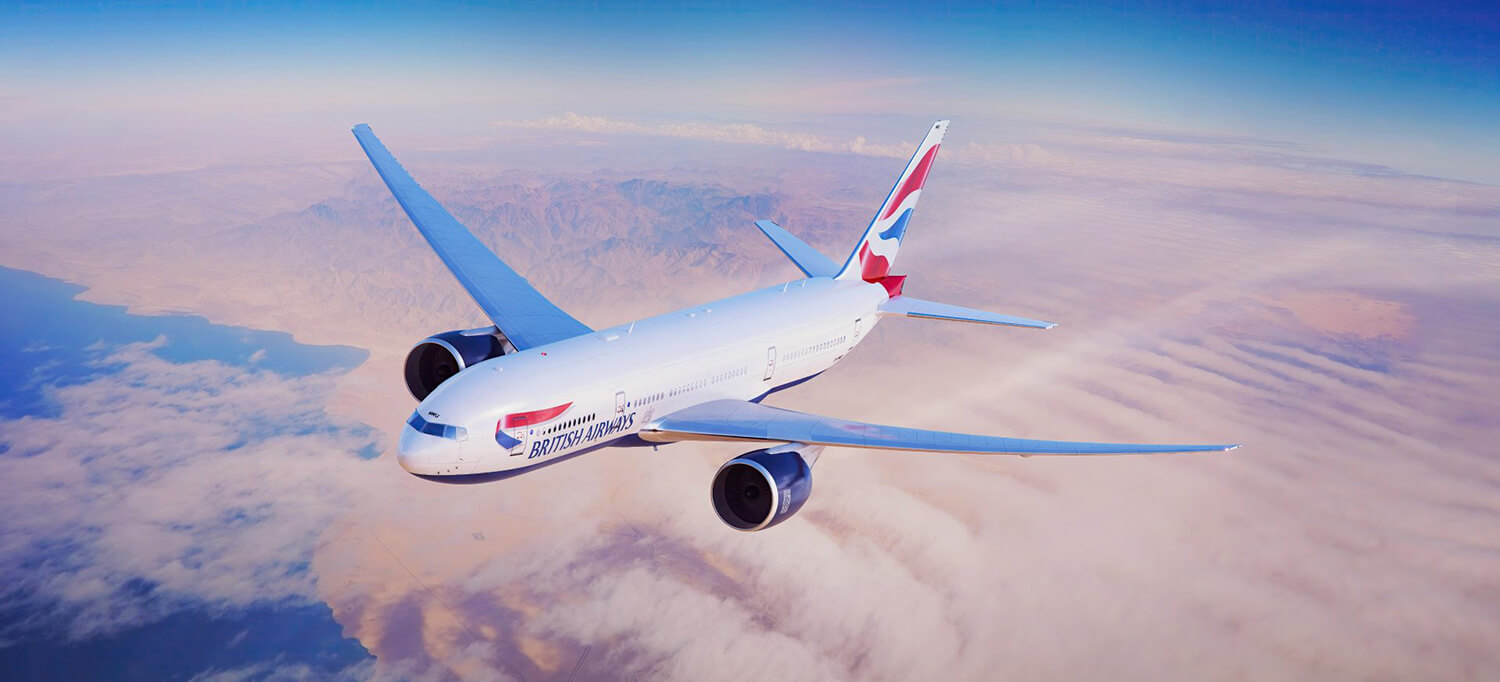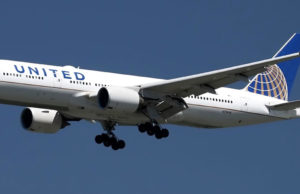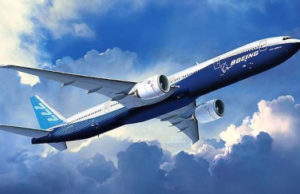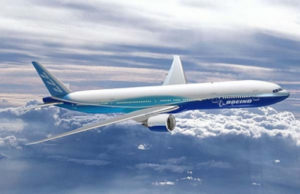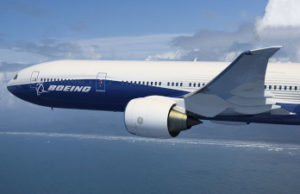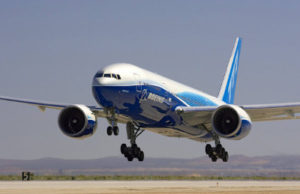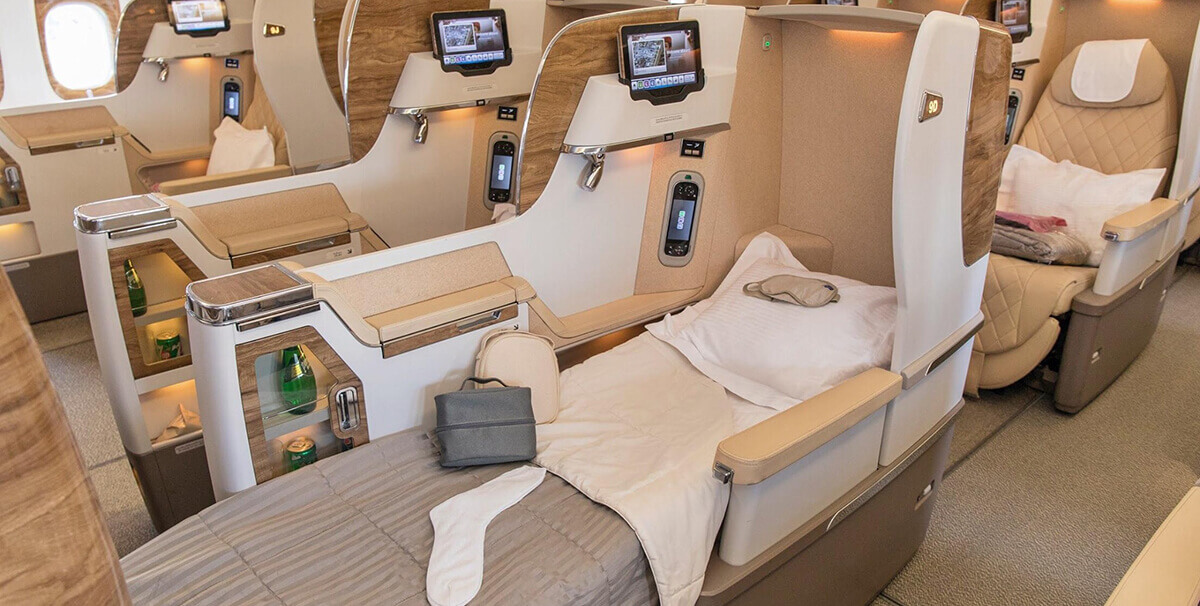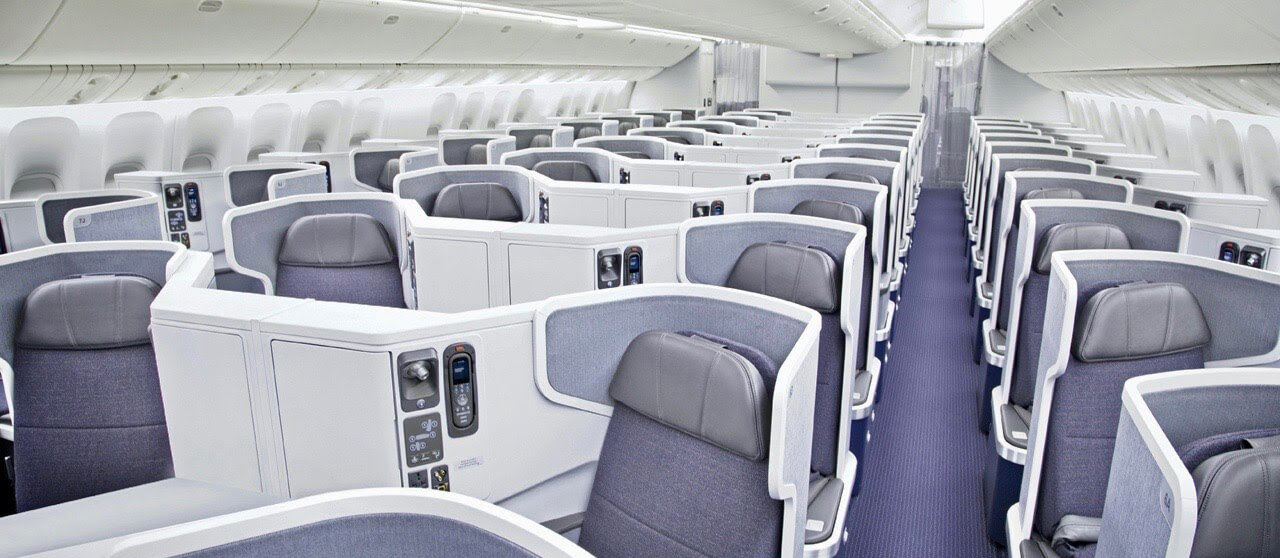| Variant |
777-200 |
777-200ER |
777-200LR |
777-300 |
777-300ER |
| Flight Crew |
2 |
2 |
2 |
2 |
2 |
| Capacity |
301 (3-class) 400 (2-class) 440 (max.) |
301 (3-class) 400 (2-class) 440 (max.) |
301 (3-class) 400 (2-class) 440 (max.) |
365 (3-class) 451 (2-class) 550 (max.) |
365 (3-class) 451 (2-class) 550 (max.) |
| Length |
63.7 Metres (209 feet 1 Inch) |
63.7 Metres (209 feet 1 Inch) |
63.7 Metres (209 feet 1 Inch) |
73.9 Metres (242 feet 4 inches) |
73.9 Metres (242 feet 4 inches) |
| Wingspan |
60.9 Metres (199 feet 11 Inch) |
60.9 Metres (199 feet 11 Inch) |
64.8 Metres (212 feet 7 Inch) |
60.9 Metres (199 feet 11 Inch) |
64.8 Metres (212 feet 7 Inch) |
| Wing Sweep back |
31.64 Degrees |
31.64 Degrees |
31.64 Degrees |
31.64 Degrees |
31.64 Degrees |
| Wing Area |
427.80m2 |
427.80m2 |
436.80m2 |
427.80m2 |
436.80m2 |
| Tail Height |
18.5 Metres (60 feet 9 inches) |
18.5 Metres (60 feet 9 inches) |
18.6 Metres (61 feet 1 inch) |
18.5 Metres (60 feet 8 inch) |
18.5 Metres (60 feet 8 inch) |
| Cabin Width |
5.87 Metres (19 ft. 3 in.) |
5.87 Metres (19 ft. 3 in.) |
5.87 Metres (19 ft. 3 in.) |
5.87 Metres (19 ft. 3 in.) |
5.87 Metres (19 ft. 3 in.) |
| Fuselage Width |
6.20 Metres (20 ft. 4 in.) |
6.20 Metres (20 ft. 4 in.) |
6.20 Metres (20 ft. 4 in.) |
6.20 Metres (20 ft. 4 in.) |
6.20 Metres (20 ft. 4 in.) |
| Maximum Freight Capacity |
162 Cu Mtr (5,720 cu ft) 32× LD3 |
162 Cu Mtr (5,720 cu ft) 32× LD3 |
162 Cu Mtr (5,720 cu ft) 32× LD3 |
216 Cu Mtr (7,640 cu ft) 44× LD3 |
216 Cu Mtr (7,640 cu ft) 44× LD3 |
| Empty Operating Weight |
134,800 kg (297,300 lb) |
138,100 kg (304,500 lb) |
145,150 kg (320,000 lb) |
160,500 kg (353,800 lb) |
167,800 kg (370,000 lb) |
| Maximum Landing Weight |
201,840 kg (445,000 lb) |
213,180 kg (470,000 lb) |
223,168 kg (492,000 lb) |
237,680 kg (524,000 lb) |
251,290 kg (554,000 lb) |
| Maximum Takeoff Weight(MTOW) |
247,200 kg (545,000 lb) |
297,550 kg (656,000 lb) |
347,500 kg (766,000 lb) |
299,370 kg (660,000 lb) |
351,500 kg (775,000 lb) |
| Typical Cruise Speed |
Mach 0.84 (905 km/h, 490 knots) at a cruise altitude of 35,000 ft (11,000 m) |
Mach 0.84 (905 km/h, 490 knots) at a cruise altitude of 35,000 ft (11,000 m) |
Mach 0.84 (905 km/h, 490 knots) at a cruise altitude of 35,000 ft (11,000 m) |
Mach 0.84 (905 km/h, 490 knots) at a cruise altitude of 35,000 ft (11,000 m) |
Mach 0.84 (905 km/h, 490 knots) at a cruise altitude of 35,000 ft (11,000 m) |
| Takeoff Distance in International Standard Atmosphere at Mean Sea Level |
2,530 Mtrs (8,300 ft) |
3,570 Mtrs (11,700 ft) |
2,970 Mtrs (9,750 ft) |
3,380 Mtrs (11,100 ft) |
3,200 Mtrs (10,500 ft) |
| Maximum Fuel Capacity |
117,348 Ltrs (31,000 US Gal) |
171,176 Ltrs (45,220 US Gal) |
181,283 Ltrs (47,890 US Gal) |
171,176 Ltrs (45,220 US Gal) |
181,283 Ltrs (47,890 US Gal) |
| Engines x2 Options |
PW 4077 RR 877
GE90-77B |
PW 4090 RR 895
GE90-94B |
GE90-110B1
GE90-115B1 |
PW 4098 RR 892
GE90-92B/GE90-94B |
GE90-115B1 |
| Engine Thrust per Engine |
PW: 77,000 lbf (342 kN)
RR: 76,000 lbf (338 kN)
GE: 77,000 lbf (342 kN) |
PW: 90,000 lbf (400 kN)
RR: 93,400 lbf (415 kN)
GE: 93,700 lbf (417 kN) |
PW: 98,000 lbf (436 kN)
RR: 93,400 lbf (415 kN)
GE: 92,000/93,700 lbf (409 kN)/(418 kN) |
GE: 115,540 lbf (514 kN) |
— |
